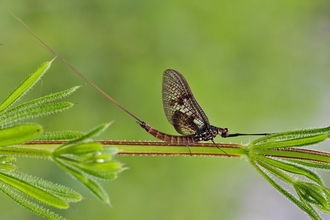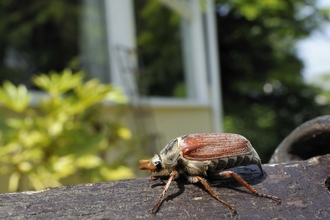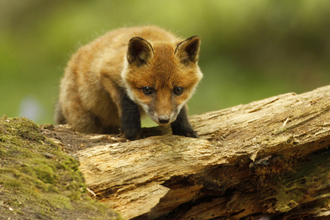The dawn chorus is at its best this month, with resident birds defending their territories and newly arrived migrants establishing theirs. The blackbird singing his heart out on my windowsill from first light can be a mixed blessing! This month sees the arrival of the last migrant species – swifts and spotted flycatchers will soon be with us. The swifts are more noticeable, screaming through the early evening skies or hawking for insects high up on warm days, but the modest charm of the little spotted flycatchers in old gardens or ancient orchards always lifts my heart. I love the way they take flight and twirl in the air to snatch a tiny insect and return to their perch.
Dr Cath’s Nature Notes – May
Steve Waterhouse
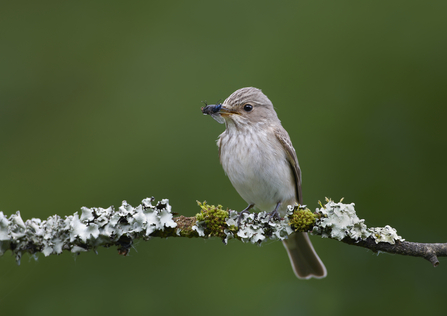
Richard Steele
They have an understated beauty and a quiet song of trills and squeaks which is easily overlooked. Sadly, these little birds have suffered an alarming decline, over 87% since 1970, and are no longer the common garden bird they once were. Do look out for them, and report sightings through BirdTrack.
Other birds are well into their breeding season, and I’ll be watching out for the local kestrels and barn owls carrying food to their broods, blackbirds with their beaks full of worms and great tits hunting for green caterpillars in the apple trees. It's a great way to find out who’s nesting on your patch without hunting for nests and running the risk of disturbing the birds or alerting predators to their presence.
Baby mammals are showing now too – evening is a lovely time for a walk in the country, watching out for baby rabbits and fox cubs. However scientific your outlook, there’s something irresistibly cute about a baby rabbit!

Common cockchafer (c) Nick Upton/2020VISION
Another seasonal joy to look forward to is the evening flight of cockchafers – their colloquial name of ‘may bug’ reflects the appearance of the flying adult beetles at this time of year. Admittedly, for many, a large, clumsy, loudly buzzing air-borne beetle crashing into the lit window is perhaps not something to bring joy to the heart, but take time to have a close look at them.
It's quite easily done if you find one grounded after a collision. Up to 30mm long, they have very handsome, slightly hairy chestnut brown elytra (wing cases), a black thorax and a striking pattern of white triangles below the ventral edge of the wing cases. Most attractive, though, are the splendid fanned antennae, which are used to detect the scent of food and potential mates. Males have seven ‘leaves’ on each fan, females only six. The pointed tail section of the body isn’t a sting, it’s a pygidium; an egg-laying device the female uses to push her eggs deep into the soil. These creatures are completely harmless!
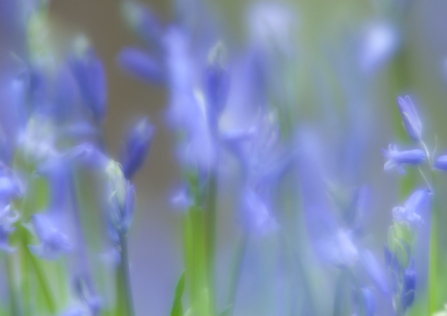
Neil Aldridge
For botanical interest, one is spoiled for choice in May. Bluebell woods are at their full glory, a delicate haze of blue seems to float above the woodland floor in the dappled light and a scent that takes me back to childhood. Over half of the world’s bluebells are found in the UK.
The true English bluebell is a delicate flower, quite unlike the much sturdier Spanish bluebell found in gardens. The nodding blue flowers drop only from one side of the slender down-curved stem with a grace that the Spanish interlopers can only dream of. Spanish bluebells don’t spread easily by seed but the pollen is easily transferred by bees and the resulting seed is viable. Hybridisation dilutes the unique characteristics of the native bluebells, and permanently alters their genetics, so if you live anywhere near a bluebell wood please be brutal, and dig up and destroy any Spanish bluebells in your garden!
By the end of the month, the few remaining wildflower-rich hay meadows we have will be decorating themselves with a truly amazing tapestry of flowers. Common and heath spotted orchids will be showing a promise of the glory to come, yellow rattle, eyebright, pignut and vetches will be shining amongst the lengthening grasses, and bees, butterflies and day-flying moths will be busy whenever the sun is shining. Make the effort to get out and see one of these fragments of pre-industrial agriculture – Melverley Meadows reserve near Whitchurch is a splendid example.
Finally, a note on mayflies. There are 51 species of mayfly in the UK. and despite the name, you can find them on the wing any time between April and September. The emergence of one species, the green drake mayfly, coincides with the blossoming of mayflower (hawthorn) and gives the name to the whole genus. Watch out for them on warm days, dancing in swarms over rivers and lakes - delicate insects, with broad, clear wings and three long, fine tail bristles. They’re unusual amongst insects in that they have not one but two winged adult stages. On emerging from their aquatic larvae as ‘duns’ they shelter in the vegetation before moulting again, leaving their drab skin and becoming shining ‘spinners’, all dressed up to dance over the water, mate and die – in doing so, providing a banquet for fish, waterside birds and many others. May is truly a time of abundance!


